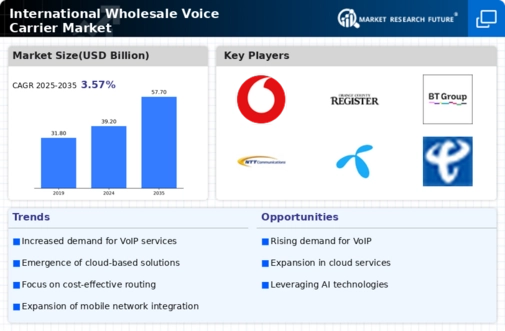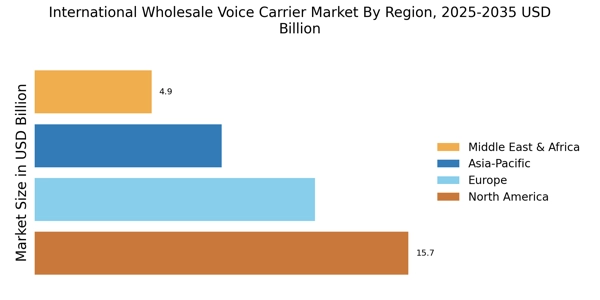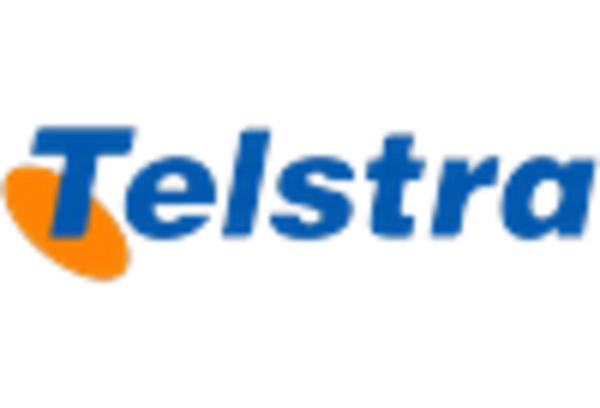Emergence of VoIP Technologies
The emergence of Voice over Internet Protocol (VoIP) technologies has transformed the landscape of the International Wholesale Voice Carrier Market. VoIP solutions offer cost-effective alternatives to traditional telephony, enabling carriers to provide competitive pricing and enhanced features. As businesses increasingly adopt VoIP for their communication needs, the market is likely to witness a shift in traffic patterns, with a growing share of voice calls being routed through internet-based platforms. This transition not only reduces operational costs for carriers but also enhances service flexibility, positioning VoIP as a key driver of market dynamics.
Rising Demand for Voice Services
The International Wholesale Voice Carrier Market is experiencing a notable increase in demand for voice services, driven by the proliferation of mobile devices and the growing reliance on voice communication. As businesses and consumers alike seek reliable and cost-effective voice solutions, the market is projected to expand significantly. According to recent estimates, the demand for international voice traffic is expected to grow at a compound annual growth rate of approximately 5% over the next few years. This trend indicates a robust appetite for voice services, compelling carriers to enhance their offerings and infrastructure to meet the evolving needs of customers.
Expansion of Internet Infrastructure
The expansion of internet infrastructure plays a pivotal role in shaping the International Wholesale Voice Carrier Market. Enhanced connectivity and the rollout of high-speed broadband networks facilitate seamless voice communication across borders. As countries invest in upgrading their telecommunications infrastructure, the capacity for international voice traffic increases, thereby driving market growth. Recent data suggests that regions with improved internet penetration witness a surge in voice service adoption, as users benefit from better quality and lower latency. This trend underscores the importance of infrastructure development in supporting the burgeoning demand for international voice services.
Increased Focus on Quality of Service
In the International Wholesale Voice Carrier Market, there is an increasing focus on quality of service (QoS) as carriers strive to differentiate themselves in a competitive landscape. Customers are becoming more discerning, seeking providers that can guarantee high-quality voice transmission with minimal disruptions. As a result, carriers are investing in advanced technologies and monitoring systems to ensure optimal performance. Market data indicates that carriers prioritizing QoS are likely to capture a larger share of the market, as businesses and consumers alike are willing to pay a premium for reliable voice services. This emphasis on quality is reshaping the competitive dynamics within the industry.
Regulatory Developments and Compliance
Regulatory developments and compliance requirements are significant factors influencing the International Wholesale Voice Carrier Market. As governments and regulatory bodies implement new policies aimed at enhancing consumer protection and ensuring fair competition, carriers must adapt their operations accordingly. Compliance with these regulations can be complex and resource-intensive, yet it is essential for maintaining market access and credibility. Recent trends indicate that carriers that proactively engage with regulatory frameworks are better positioned to navigate challenges and capitalize on opportunities within the market. This regulatory landscape is likely to continue evolving, impacting strategic decisions across the industry.

















Leave a Comment